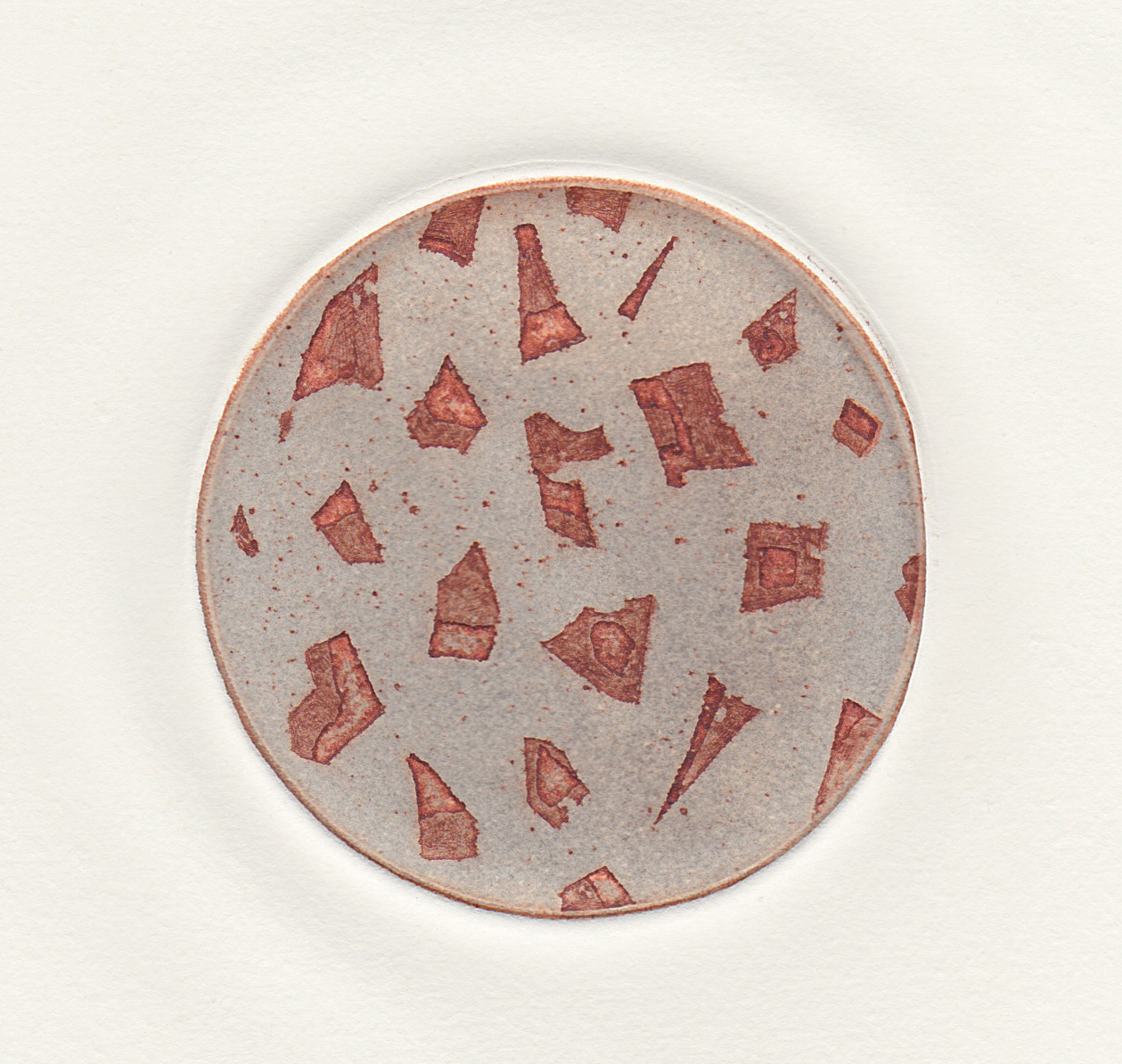Translation from German: 'Technology: the knack of so arranging the world that one does not have to experience it.' Homo Faber by Max Frisch.
At Arms Length
Rachel Joy
At Arms Length: a print folio
11 Viscosity etchings
Colour variant editions of 8
2013
At Arms Length #1 (2013). Viscosity Etching.
At Arms Length #2 (2013). Viscosity Etching.
At Arms Length #3 (2013). Viscosity Etching.
At Arms Length #4 (2013). Viscosity Etching.
At Arms Length #5 (2013). Embossing.
At Arms Length #6 (2013). Viscosity Etching.
At Arms Length #7 (2013). Viscosity Etching.
At Arms Length #8 (2013). Viscosity Etching.
At Arms Length #9 (2013). Viscosity Etching.
At Arms Length #10 (2013). Viscosity Etching.
At Arms Length #11 (2013). Viscosity Etching.
‘At arms length’: since the industrial revolution that is how Western society has interacted with the natural world. There has been a gradual and seemingly inexorable process of distancing ourselves, removing our selves and more definitively of “seeing” ourselves as separate from the natural world rather than as a part of it. Industrialisation marks a turning point in our understanding of our place in the world, as being distinct from it, not part of it.
The print folio At Arms Length comprises 11 viscosity etchings that explore the way industrialised societies have used a variety of lenses to get closer to, yet further from, the natural world. Microscopes, telescopes, cameras, etc. all seem to bring the viewed object closer, yet when viewed out of context the object, in a sense, becomes more distant from us. Viewed via a lens our experience becomes disembodied. We privilege one sense over all others and we de-contextualise the looking we do by filtering it with a machine. When one's interactions with the world are mediated by a machine, a de-contextualising lens, we are divorced from an experience informed by contextualising meaning. Without this sense of place or relationship one cannot have an awareness of consequences. Perhaps it is because of the saturation of such disembodied viewing experiences in our culture that we so often find ourselves looking without seeing, viewing our world without an awareness of our relationship to it and with scant regard for the consequences.











